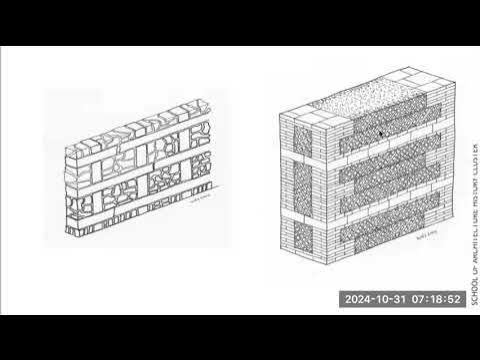Modern Methods of Construction with FP McCann using Precast Concrete
Summary
TLDRThis video highlights the benefits of precast reinforced concrete as a modern construction method. Unlike traditional construction, which requires large sites, extended time, and a big workforce, precast concrete offers efficiency, reduced waste, and faster construction. Components are made off-site, ensuring high quality and easy installation. The system is fire-resistant, cost-effective, and can be used in various building types, including apartments, hotels, and social housing. Precast units are quickly installed, require minimal workforce, and reduce noise and disruption, making it ideal for urban areas and tight construction sites.
Takeaways
- 🏗️ Precast reinforced concrete is a modern construction method that significantly enhances efficiency compared to traditional on-site construction.
- 🚧 Traditional construction methods require large workforces, storage areas, and create noise, waste, and safety risks.
- 🏢 Precast building components are produced off-site in controlled factory environments, ensuring consistent quality and reduced site disruption.
- 🚚 Components are delivered on a just-in-time basis and installed directly from delivery vehicles, minimizing storage needs and on-site clutter.
- 🧱 Sandwich panels form the exterior walls, featuring an inner structural leaf, insulation, and a prefinished outer leaf, often pre-fitted with doors and windows.
- 🔥 Precast concrete offers superior fire resistance since insulation is fully encased within the concrete structure.
- ⚙️ Structural integrity is achieved through continuous vertical and horizontal ties, with floors acting as diaphragms to transfer lateral forces to foundations.
- ⏱️ Precast buildings can be constructed in up to half the time required for traditional builds, with lower costs and reduced labor needs.
- 🌆 This method is ideal for tight urban areas, offering minimal noise, waste, and disturbance to surrounding communities.
- 💡 Precast systems are versatile, suitable for applications such as housing, hotels, student accommodations, and prisons.
- 🌡️ The thermal mass of exposed concrete improves energy efficiency by regulating indoor temperatures and reducing heat fluctuations.
- 🛠️ Precast units require little to no temporary works, are maintenance-free, and allow quicker access for follow-on trades.
- ♻️ Off-site manufacturing reduces material waste since components are made to order and produced precisely to design specifications.
- 💰 Overall, precast reinforced concrete construction is a cost-effective, high-quality, and sustainable modern building solution.
Q & A
What are the main disadvantages of traditional construction methods?
-Traditional construction methods require a large amount of space for material storage and vehicle movement, are time-consuming, noisy, disruptive to surrounding communities, and generate excessive waste. Additionally, they demand a large workforce, which can increase costs and health and safety risks.
How does precast reinforced concrete differ from traditional construction methods?
-Precast reinforced concrete involves manufacturing components off-site in a controlled factory environment, which improves quality, reduces on-site construction time, and minimizes waste. These components are delivered just in time and installed quickly, making it more efficient than traditional methods.
What are sandwich panels and what benefits do they provide in precast concrete construction?
-Sandwich panels are exterior wall units consisting of a structural inner leaf, an insulating layer, and a prefinished outer leaf. They provide a ready-made exterior with various finishes and are fire-resistant. The insulation is fully encased, enhancing thermal performance and eliminating the need for additional fire protection.
What are the key safety and health benefits of using precast concrete construction?
-Precast construction reduces the need for a large workforce on-site, which lowers health and safety risks. The installation process is faster and quieter, reducing the likelihood of accidents. Additionally, there is no need for temporary propping or extensive scaffolding, minimizing risks for workers.
How does the construction speed of precast concrete compare to traditional building methods?
-Precast concrete buildings can be erected in half the time of traditionally constructed buildings. This is due to the off-site manufacturing of components, reducing delays and the need for time-consuming on-site work.
What types of buildings are best suited for precast concrete construction?
-Precast concrete is suitable for a wide range of building types, including hotels, hostels, social housing, student accommodation, apartment buildings, and prisons. Its versatility and efficiency make it ideal for both residential and commercial projects.
What are the thermal benefits of using precast reinforced concrete?
-Precast reinforced concrete has excellent thermal mass properties, meaning it can absorb, store, and later radiate heat. This helps to reduce daytime temperatures by up to 5 degrees, improving energy efficiency and indoor comfort.
How does the installation of precast concrete components affect the construction process?
-Precast concrete components are quickly installed, allowing for faster access by follow-on trades. The installation process is quiet, requires no temporary works, and eliminates the need for storage space on-site. These factors contribute to a smoother and more efficient construction schedule.
Why is precast reinforced concrete considered more cost-effective than traditional methods?
-Precast concrete reduces costs by eliminating the need for on-site storage, lowering workforce requirements, and minimizing waste. Its quick installation process also reduces the overall time and expenses associated with construction, making it a more cost-effective solution.
What makes precast concrete more fire-resistant than other building methods?
-Precast concrete is inherently fire-resistant due to the solid, encased insulation within the walls, floors, and roof slabs. This eliminates the need for site-applied fire protection and ensures a higher level of fire safety in the finished building.
Outlines

此内容仅限付费用户访问。 请升级后访问。
立即升级Mindmap

此内容仅限付费用户访问。 请升级后访问。
立即升级Keywords

此内容仅限付费用户访问。 请升级后访问。
立即升级Highlights

此内容仅限付费用户访问。 请升级后访问。
立即升级Transcripts

此内容仅限付费用户访问。 请升级后访问。
立即升级5.0 / 5 (0 votes)






